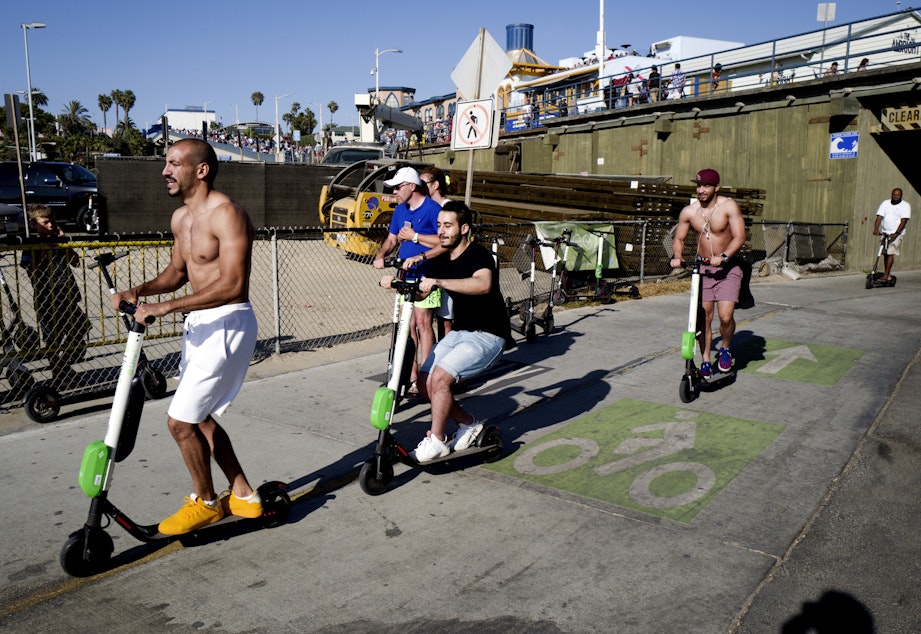Move over, Seattle pedestrians? Scooters may be headed your way

The cities of Bothell, Everett, Redmond, Spokane and Tacoma have all welcomed rental scooters on their streets and sidewalks. Now Seattle plans to make motorized scooters available to rent in the first half of next year.
In September, the King County Council passed an ordinance to authorize the scooters in White Center.
The Seattle Department of Transportation is holding a public forum Wednesday 6 p.m. - 8 p.m. at Seattle City Hall on the eco-friendly, but sometimes controversial, scooters.
A big concern has been whether scooters, either parked or moving on sidewalks, will make life harder for pedestrians.
According to Lime, the only scooter-rental company currently operating in Washington state, its scooters have a maximum speed of 15 miles an hour. Consumer Reports and others have found the vehicles can reach 21 miles an hour on level surfaces.
In parts of downtown Tacoma and along the city’s seaside Ruston Way, scooter users uncomfortable mixing with cars have little choice but to use busy sidewalks.
In those places, the city has cut scooters' top speed by half or more — and not just with street signs or seldom-enforced laws on paper.
"We’ve worked with Lime to put into effect in an 8 mile per hour speed cap,” Liz Kaster with Tacoma's Public Works department said. “The scooters automatically, using their geolocating whatever magic that is, make it so you can’t go any faster than that in those areas."
Scooter backers say the key is having safe bike lanes, so scooters don't need to use sidewalks.
“Overwhelmingly, scooter riders want to ride in protected bike lanes,” Jonathan Hopkins with Lime said. “And when protected bike lanes are present, issues with sidewalk riding go down markedly.”
More than 80,000 people have tried the scooters in Tacoma since they were introduced a year ago, making 327,000 trips, according to Kaster. In that time, according to Tacoma Fire officials, 25 scooter rides ended in crashes that resulted in 911 calls, a tiny fraction of the number of car crashes in the city.
Kaster said she's excited to see more people getting around town without driving a car, especially since surveys in other cities show that many scooter riders were not bicycle riders before they tried a scooter.
“What’s exciting about that is we’re getting a new market of folks, hopefully out of cars, using these modes that are healthier for people and the environment,” she said.
Hopkins said national surveys showed that 37 percent of Lime scooter users rented the lightweight vehicles to commute to work, and 10 percent rode them to get to a transit stop.
Seattle transportation officials, who are in the midst of developing rules for scooter vendors to operate under, said the vehicles must not create new barriers for pedestrians or people with disabilities.
“Over the past few months, we’ve been speaking to groups who represent people with disabilities, diverse and low-income populations, pedestrians, and bicyclists,” Seattle Department of Transportation spokesperson Ethan Bergerson said in an email.
The Move All Seattle Sustainably coalition, which includes advocates for pedestrians, bicyclists and people with disabilities, did not respond to a request for comment.
Seven scooter companies, with their products in tow, were expected at the Seattle forum.
Seattle’s current speed limit for scooters is 20 miles per hour, and riders are required to wear helmets.

